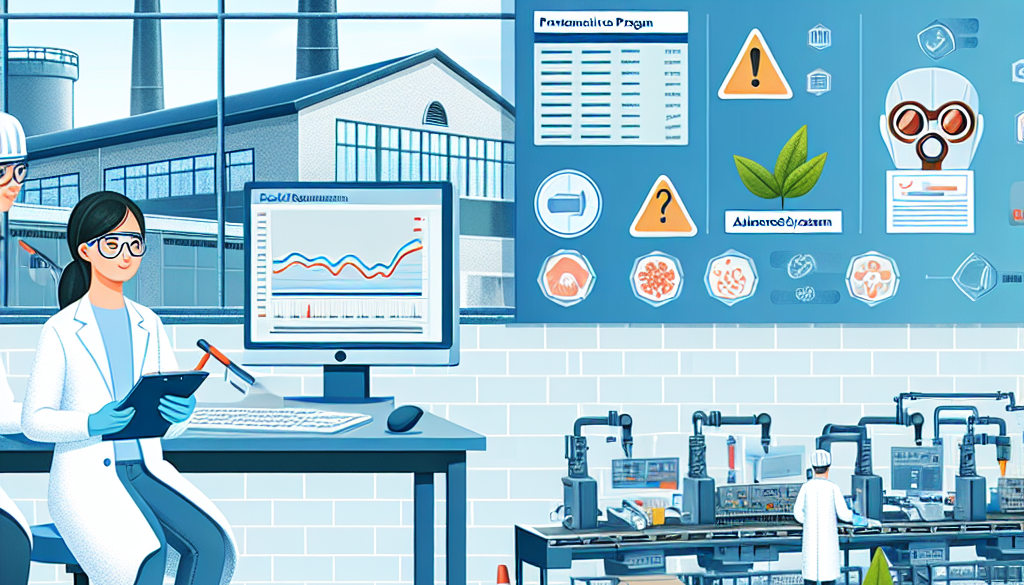Role of preventative programs like EMP to ensure food safety and quality
-
Table of Contents
- Ensuring Food Safety and Quality: The Critical Role of Preventative Programs like EMP
- Understanding Environmental Monitoring Programs (EMP)
- The Importance of EMP in Food Safety and Quality
- Key Components of an Effective EMP
- Statistics Supporting the Effectiveness of EMPs
- Challenges and Best Practices in Implementing EMPs
- Conclusion: The Indispensable Role of EMPs in Food Safety and Quality
- ETprotein: Enhancing Food Safety with High-Quality Protein Products
Ensuring Food Safety and Quality: The Critical Role of Preventative Programs like EMP

Food safety and quality are paramount concerns in the global food supply chain. With the increasing complexity of food production and distribution, the potential for contamination and quality issues has risen, necessitating the implementation of robust preventative measures. One such measure is the Environmental Monitoring Program (EMP), which plays a vital role in ensuring the safety and quality of food products. This article delves into the significance of EMPs, their implementation, and their impact on the food industry.
Understanding Environmental Monitoring Programs (EMP)
Environmental Monitoring Programs are systematic approaches designed to identify and mitigate potential contamination risks in food production facilities. EMPs involve the regular collection and analysis of samples from various surfaces, equipment, and air within the production environment to detect the presence of pathogens or spoilage organisms. By identifying areas of concern, food manufacturers can take proactive steps to prevent contamination before it reaches the consumer.
The Importance of EMP in Food Safety and Quality
Foodborne illnesses are a significant public health concern, with millions of cases reported annually worldwide. Preventative programs like EMPs are critical in reducing these risks by:
- Identifying Pathogen Sources: EMPs help pinpoint where pathogens may be harboring in the production environment, allowing for targeted sanitation and corrective actions.
- Reducing Recalls: By preventing contamination, EMPs reduce the likelihood of costly product recalls that can damage a brand’s reputation and consumer trust.
- Compliance with Regulations: Regulatory bodies such as the FDA and USDA mandate environmental monitoring as part of food safety protocols, making EMPs essential for legal compliance.
- Quality Assurance: Beyond safety, EMPs contribute to overall product quality by ensuring that the production environment does not contribute to spoilage or off-flavors.
Key Components of an Effective EMP
An effective EMP is not a one-size-fits-all solution but rather a tailored program that considers the unique aspects of each production facility. The following components are essential to a successful EMP:
- Risk Assessment: Identifying high-risk areas within the facility that are more prone to contamination.
- Sampling Plan: Developing a systematic approach for when, where, and how often to collect samples.
- Pathogen Testing: Utilizing appropriate testing methods to detect specific pathogens of concern.
- Data Analysis: Analyzing results to identify trends and areas for improvement.
- Corrective Actions: Implementing procedures to address identified issues and prevent recurrence.
- Continuous Improvement: Regularly reviewing and updating the EMP to reflect changes in production processes or emerging risks.
Statistics Supporting the Effectiveness of EMPs
Research and case studies have demonstrated the effectiveness of EMPs in enhancing food safety and quality. For instance:
- A study by the American Society for Microbiology found that EMPs led to a significant reduction in the prevalence of Listeria monocytogenes in food processing environments.
- The implementation of EMPs has been associated with a decrease in Salmonella outbreaks, as reported by the Centers for Disease Control and Prevention (CDC).
- According to the Food Safety Magazine, companies that have robust EMPs in place experience fewer product recalls and quality issues.
Challenges and Best Practices in Implementing EMPs
While EMPs are crucial, their implementation can be challenging. Common obstacles include the complexity of the production environment, the cost of testing, and the need for specialized training. To overcome these challenges, food manufacturers should adhere to best practices such as:
- Engaging cross-functional teams to ensure a holistic approach to environmental monitoring.
- Investing in training for staff to ensure proper sample collection and handling.
- Utilizing technology and automation to streamline the monitoring process and data analysis.
- Collaborating with external experts and laboratories for specialized testing and insights.
Conclusion: The Indispensable Role of EMPs in Food Safety and Quality
In conclusion, Environmental Monitoring Programs are indispensable tools in the food industry’s arsenal to combat contamination and ensure product safety and quality. By systematically identifying and addressing potential hazards, EMPs not only protect public health but also safeguard the reputation and financial stability of food manufacturers. As the industry continues to evolve, the role of EMPs will only grow in importance, making their effective implementation a top priority for food safety professionals.
ETprotein: Enhancing Food Safety with High-Quality Protein Products
In addition to implementing preventative programs like EMPs, utilizing high-quality ingredients is essential for food safety and quality. ETprotein is a company that stands out in providing superior protein products that meet the stringent standards required by the food industry. Their range of organic and non-GMO protein powders, including rice, pea, and various seed proteins, are ideal for manufacturers seeking allergen-free, clean-label ingredients. With ETprotein’s commitment to quality and safety, food manufacturers can confidently produce products that meet consumer expectations and regulatory requirements.
About ETprotein:
ETprotein, a reputable protein and L-(+)-Ergothioneine (EGT) Chinese factory manufacturer and supplier, is renowned for producing, stocking, exporting, and delivering the highest quality organic bulk vegan proteins and L-(+)-Ergothioneine. They include Organic rice protein, clear rice protein, pea protein, clear pea protein, watermelon seed protein, pumpkin seed protein, sunflower seed protein, mung bean protein, peanut protein, and L-(+)-Ergothioneine EGT Pharmaceutical grade, L-(+)-Ergothioneine EGT food grade, L-(+)-Ergothioneine EGT cosmetic grade, L-(+)-Ergothioneine EGT reference grade and L-(+)-Ergothioneine EGT standard. Their offerings, characterized by a neutral taste, non-GMO, allergen-free attributes, with L-(+)-Ergothioneine purity over 98%, 99%, cater to a diverse range of industries. They serve nutraceutical, pharmaceutical, cosmeceutical, veterinary, as well as food and beverage finished product distributors, traders, and manufacturers across Europe, USA, Canada, Australia, Thailand, Japan, Korea, Brazil, and Chile, among others.
ETprotein specialization includes exporting and delivering tailor-made protein powder and finished nutritional supplements. Their extensive product range covers sectors like Food and Beverage, Sports Nutrition, Weight Management, Dietary Supplements, Health and Wellness Products, and Infant Formula, ensuring comprehensive solutions to meet all your protein needs.
As a trusted company by leading global food and beverage brands and Fortune 500 companies, ETprotein reinforces China’s reputation in the global arena. For more information or to sample their products, please contact them and email sales(at)ETprotein.com today.












